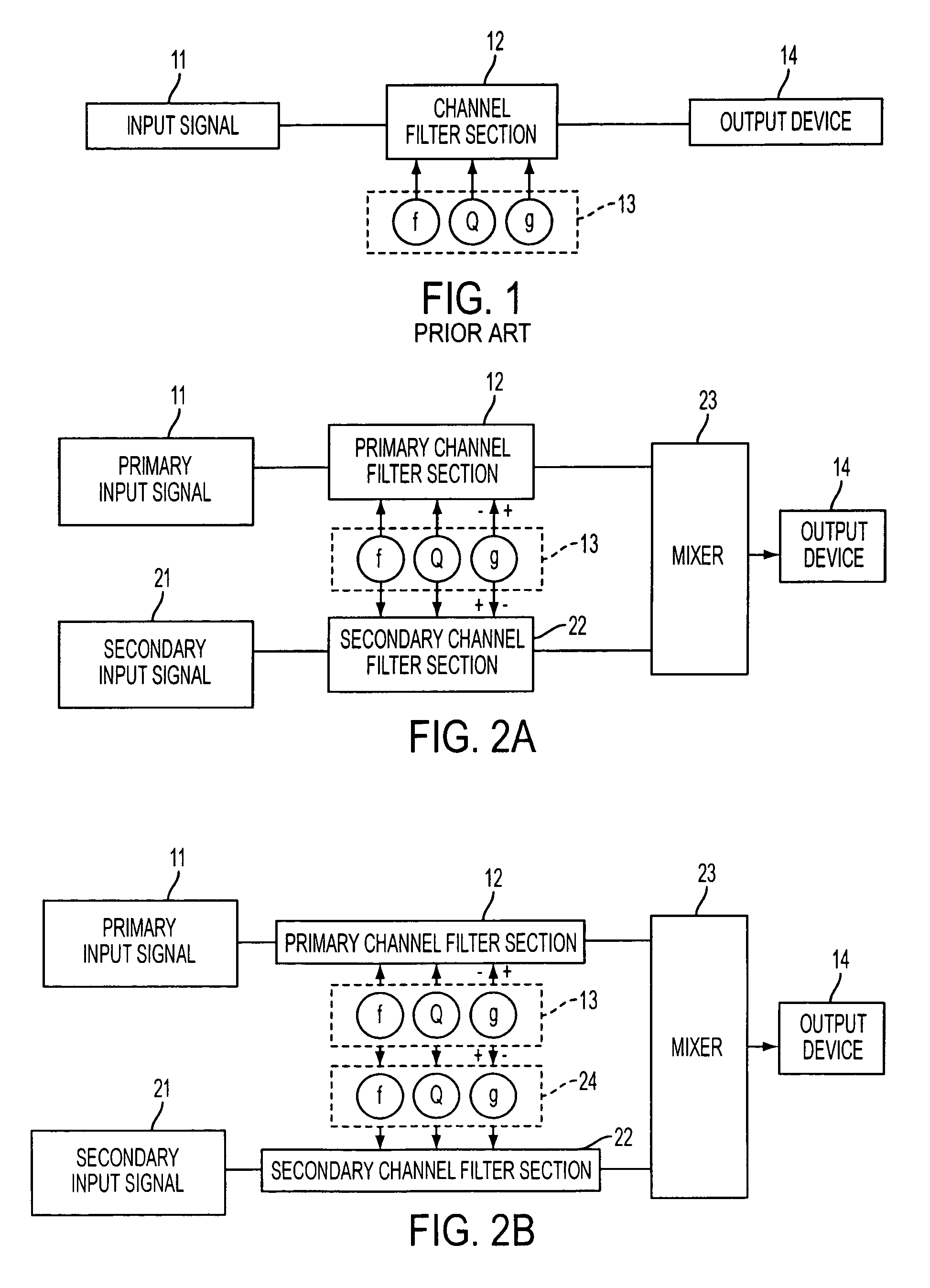Complementary-pair equalizer
a technology of equalizer and pair, applied in the field of signal modification, can solve the problems of increasing the rejection of undesired signals, and achieve the effects of increasing ratio, increasing energy, and decreasing energy
- Summary
- Abstract
- Description
- Claims
- Application Information
AI Technical Summary
Benefits of technology
Problems solved by technology
Method used
Image
Examples
Embodiment Construction
[0020]FIG. 1 is a general block diagram of a typical audio equalizer as is known in the art. The type shown here is for a single channel of a fully-parametric equalizer. An input signal 11 is fed to a filter circuit 12 whose parameters are determined by the controls ‘f’, ‘Q’ and ‘g’13. Control ‘f’ determines the center frequency of the affected area. Control ‘Q’ determines the bandwidth of the affected area. Control ‘g’ reduces (by convention, counterclockwise from center position) or increases (clockwise from center position) the signal in the area determined by the settings of ‘f’ and ‘Q’. At the center setting of ‘g’, where there is no increase or decrease of signal, the settings of ‘f’ and ‘Q’ have no effect. The final signal may be sent to an output device 14. For some discussion below, it is helpful to refer to input signal 11 and filter circuit 12 as the PRIMARY input signal and filter circuit.
[0021]There are two basic categories of filters. The first category is that of the ...
PUM
 Login to View More
Login to View More Abstract
Description
Claims
Application Information
 Login to View More
Login to View More - R&D
- Intellectual Property
- Life Sciences
- Materials
- Tech Scout
- Unparalleled Data Quality
- Higher Quality Content
- 60% Fewer Hallucinations
Browse by: Latest US Patents, China's latest patents, Technical Efficacy Thesaurus, Application Domain, Technology Topic, Popular Technical Reports.
© 2025 PatSnap. All rights reserved.Legal|Privacy policy|Modern Slavery Act Transparency Statement|Sitemap|About US| Contact US: help@patsnap.com



